#cuitlacoche
Explore tagged Tumblr posts
Text
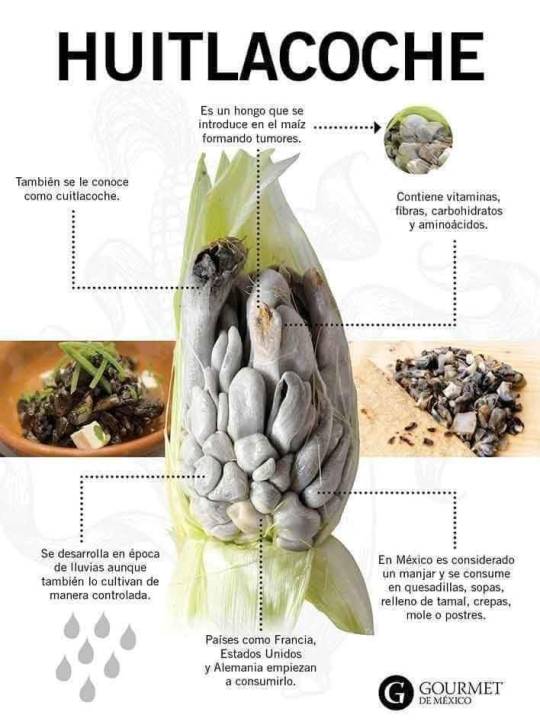
El Huitlacoche.
#ElDato : Para empezar a hablar sobre el "cuitlacoche" o "huitlacoche", hay que decir que ambas son formas correctas de referirse a este hongo, pero mientras que la primera hace referencia a un origen prehispánico la otra sólo hace referencia al hongo comestible. El origen etimológico prehispánico sólo se encuentra en la palabra cuitlacoche: proviene del náhuatl
A pesar de que hoy en día se ha investigado bastante sobre este hongo comestible, no se tienen documentos que hablen sobre el origen exacto de las primeras ingestas del huitlacoche
Es un hecho que el cuitlacoche lleva existiendo miles de años en los campos mexicanos, pero no es posible asegurar que esto fuera alimento de gobernantes, ni ofrenda de dioses en la época prehispánica, sino más bien una maldición, anormalidad en la cosecha y era una plaga poco deseada. Esta parece ser la idea más común, que en tiempos prehispánicos este hongo haya sido visto como una anormalidad del maíz, un producto indeseable y molesto, porque significaba la pérdida de la mazorca. Entre los mayas, al sur del país, por ejemplo, se pensaba que era una plaga provocada por la acción divina ligada a la lluvia
En la mayoría de los países, el huitlacoche se considera un parásito, y es el terror para los agricultores, en México es un ingrediente preciado, exótico y muy valorado. Además este hongo comestible se ha convertido en un sofisticado ingrediente entre los más reconocidos chefs y es un producto gourmet. Créditos a quien corresponda 👌😋
14 notes
·
View notes
Text
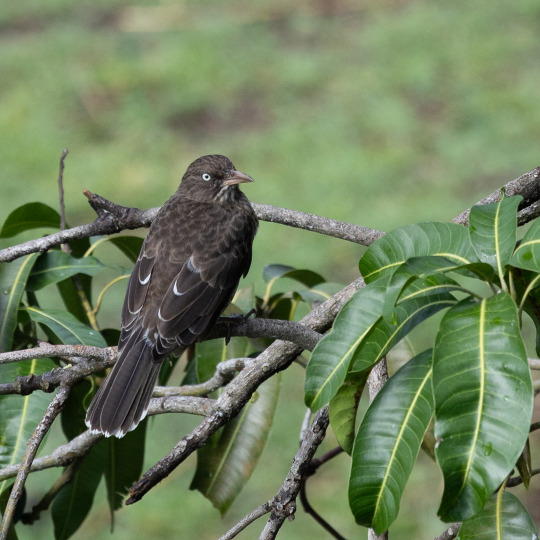
Zorzal Pardo/Chucho a.k.a Cuitlacoche Chucho / Pearly-eyed Thrasher / Margarops fuscatus
"On Puerto Rico, it is very common throughout the island in most habitats—the lone exception to its general inability to thrive on large islands with diverse avifaunas."
"Often behaves more like a jay than like a typical thrasher: noisily barging onto a scene in squabbling groups, taking scraps of food from picnic tables, etc."
Source: birdfinding.info
📍Boquerón, Cabo Rojo, Puerto Rico Canon R6 Mark II
#puerto rico#nature#san juan#wildlife#photographers on tumblr#boricua#bird photography#birdwatching#landscape#canon r6 mark ii#zorzal#chucho#Margarops fuscatus#Pearly-eyed Thrasher#birds#birds nature#wild birds#birdlovers#birding#birdblr#aves#avessilvestres#wild animals#fotografia#fotografo#pajaros#ebird#photooftheday#wildlife photography#photography
8 notes
·
View notes
Text
Chapter 4: The First Load Arrives
“It’s the weather, Bob. They have to wait until it’s perfect. Right now it’s snowing in El Paso,” I told Bifocal Bob on the payphone call to New York.
“Snowing in El Paso?” he asked, “Is that even possible? I thought it was in the desert.”
“It’s the high altitude desert, Bob, and the crossers don’t want their movements tracked in the snow.”
“That’s ridiculous. Just get me the fucking load. Otherwise, I’m spending my money on what Neanderthal Ned brings me.”
“Neanderthal Ned” was a reference to one of my border smuggling competitors. He notably lived in a luxurious, retrofitted cave in the mountains overlooking Tucson and was able to amass substantial amounts of Mexican cannabis from independents operating along the Arizona border. Architectural Digest had written a favorable article about his Taliesin West inspired residence which was equipped with advanced automatic features like automated sky lights and floating stairways well ahead of its time. Ned, operating outside of cartel jurisdiction, retrofitted motor homes whose interiors had been altered to fit his shipments which averaged over a ton.
As well-known as Ned and his operation was, it was his girlfriend, Molly, who captured the most attention. Molly and I moved in the same circles. After she and Ned parted company, Molly showed up as a companion to Billy Mercedes, one of my main San Francisco distributors who lived in Marin County. After that Molly married a certain well-known television doctor, who wrote an anguished book, “Taming Molly” about his attempts to get Molly to conform to suburban life while married to medicine.
Ned was reliable, I explained, but this was on another level. We were sending the best genetics to Mexico. Commercial logistics were being arranged. The cartel had ensured a steady supply.
“Bob, you’re about to be on the other end of a pipeline,” I explained.
“Snowing in El Paso? That has got to be some bullshit. Get here as soon as you can.” Patience was not a virtue with Bob.
Waiting is the hardest part of the game. Tension continues to build as the wait goes on. The tension is composed of one or two parts anticipation and several parts fear. Fear that your warehouse might stand out, that crossers would be captured and the authorities might start working their way up the supply chain. Every day I spent at the Las Cruces, New Mexico Marriot was another day that law enforcement might start to wonder what I was doing there, comfortably ensconced in one of their suites in an area not known for tourism. Staying in one of the Marriot suites, playing the tourist and seeing the wonders of El Paso and Juarez? Hardly.
What to do with all that nervous energy? You couldn’t leave El Paso because the shipment was imminent. It could be seized at any point and then you were out whatever investment you had made and you might attract Federal attention. You couldn’t sit in your room or you’d go crazy with boredom. Every day, to avoid the anxiety, I would make the culinary circuit with Brian: breakfast at Lucy’s or Mi Pueblito with the great chili con queso, always followed by scrambled eggs with jalapenos or an egg over easy on one of their traditional red sauce enchiladas. Then we’d head over the bridge and spend the afternoon at the Florída in Juarez. The Florída restaurant was widely known to be owned by members of the cartel so we felt comfortable. Whatever the restaurant, Brian made sure that we were always supplied with an endless pitcher of margaritas.
If it was the right time of year, the Florída had cuitlacoche, the gray, stone-shaped fungus that becomes like tar when it is cooked and has an earthy, tangy, mushroom-like flavor with a hint of raw corn. Farmers call the dish el oro negro, or black gold. The Florída was also renowned for all of the classic Mexican dishes: turkey mole with three kinds of chocolate from Oaxaca, cooked for thirty six hours in clay pot, or carnitas tacos made the old fashioned way, carved from a roasting spit.
Later, after margaritas and a couple of joints of Mendocino homegrown, we would reconvene at Juarez’s renowned watering hole, the legendary border saloon, the Kentucky Club. The Kentucky was frequented by Generals Pancho Villa and Alvara Obregón, the first president of Mexico after the revolution. “The Kentucky” had a timeless quality with pictures from the Mexican Revolution of Pancho Villa riding majestically through town on a horse festooned with turquoise and silver bridles, Villa handing out chocolates or silver bullets to children, Villa with what looked like a cannabis blunt and of the U.S. general, Pershing, who led the Villa Expedition to find and punish Pancho Villa for his attack on Fort Bliss. If you stayed at the Kentucky Club long enough you hear all the stories about Villa. He was famous for his consumption of cannabis, celebrated in “La Cucaracha” and it was historical legend that Villa smoked his cannabis at the Kentucky.
Tables at the Kentucky, with the afternoon light casting shadows, reminded me of an elegant bar somewhere in the British Raj as the sun was setting on the Empire. Any table held court on an international assembly of stealthy high-end thieves, secretive smugglers, cartel lieutenants and Federal agents trying to avoid detection. The Kentucky was styled with thoughtful attention to detail from another era like the soft green-tiled trough that circled the bar which allowed their card playing patrons to urinate at will and not leave their cards unattended. Since the bar was constructed before refrigeration, every day at 4 PM, a skinny young kid, who looked as if he should still be in middle school, carried in the blocks of ice used for mixed drinks on his back. He was always accompanied by his boss, a seasoned four foot dwarf, who directed him and collected money for the ice. The dwarf danced back and forth with a nervous tick as he visited each table to offer an earnest “Buenas tardes”. He always stuck out his hand, expecting a tip in recognition of his status.
I formed a special bond with the Kentucky’s oldest bartender, Andrés, when I brought him a New York Times Travel Section article about him and the Kentucky Club. He framed it and to this day it’s still hanging from a favored location on the wall behind the bar. With great ceremony, he offered to give me his secret margarita recipe which I will reveal now for the first time: one part Hornitos Reposado tequila, one part squeezed lime, one part the Mexican orange liqueur, “Controy”. Andrés was insistent that I not try to substitute the French version of this same liqueur, “Cointreau”. It was finished with lots of hand-chiseled ice.
We blithely disregarded the DEA agents who would occasionally occupy a shadowy corner table, but later, when Brian’s partner Charlie was indicted, we found out that an entire Justice Department task force had been listening and waiting for just the right time. Brian and Charley had arranged for a planeload of Colombian cannabis, flown by some Southwest Airline pilots, that was abandoned before it was fully unloaded in the Palm Springs desert. Years later, the DEA confronted Charlie right in the Kentucky, laid out their evidence among the shots of tequila, and secured Charlie’s cooperation.
Still half-lit from the Kentucky, we would hop back into Leilani’s Cadillac and get in line to go back across the border. It was time for a nap to sleep off the tequila, to clean up and get ready for the evening.
Brian’s answer to the waiting doldrums was to honor a Texas tradition and visit one of El Paso’s multitude of topless bars. El Paso, being part of the South, with the Fort Bliss army base and the University of Texas, El Paso was a prime location for the industry. On my second day in town, Brian took me to lunch in a small downtown café called the “King’s X”. Just as I was biting into my turkey club, the clock struck one and the staff, with matching uniforms, came out to engineer a spectacular transformation. A small stage emerged from a hidden panel and four gorgeous college girls from UTEP walked out in sequined bikinis. It wasn’t long before I stopped eating lunch to watch the performance. Maybe I had led a sheltered academic life previously, but I was from California and had never seen anything like this: one minute I was eating lunch and the next there were college girls dancing topless with breasts unexpectedly inches from my face. Brian noticed my discomfort and immediately called over one of the UTEP girls and insisted she sit on my lap.
He introduced me as a “professor” and asked her what her major was. “I’m studying law,” she said and asked if I could help her with her homework as Brian slipped her a twenty.
“This is my friend’s first time in El Paso,” Brian explained, “I’d like you to introduce him to the way we do things in the state of Texas.” At that narrow, two-person table, she took some time to show me the affability for which Texas was famous. My wire-rimmed glasses were smashed and bent, but I was infatuated.
Unlike California, topless bars were everywhere. There seem to be an attempt to anchor shopping malls with the classic troika of Texas: a topless bar, a pawn shop, and a church. There were some that catered to those who liked heavier girls, to those that liked thin girls, to natural and artificially constructed girls and to every possible ethnicity. Some of them tried to overwhelm you with scale and sheer numbers of dancers and then there were others that were all nude. The latter required one to bring one’s own alcohol, because of an obscure Texas law that recognized the potential for social chaos if alcohol and complete exposure were sold in the same location at the same time. Another timely framed rule on the wall of every bar in Texas, “It is unlawful to discharge a firearm in an establishment where alcohol is sold.” Only in Texas would the constabulary feel the need to spell out the obvious. I gradually settled on two bars that stood out: the Lamplighter, and Prince Machiavelli’s. The Lamplighter became my favorite and it wasn’t long before all California propriety was gone and I started dating the dancers.
One morning, Brian showed up early at my room at the Marriot. Brian was always well dressed with a starched collared shirt, a selection of one of his Patek Phillipe watches and exotically skinned boots. “Del, it looks like we’re out of pocket today so I’ve decided we need to get you out of those tennis shoes.” Several of the cartel lieutenants had mumbled a comment or two regarding the informality of my choice of footwear.
“Man, you can’t wear tennis shoes unless you’re at home,” they told me. ”Why even your president wears boots,” Don Chui’s son, Armando, said, referring to George W. Bush. Over time, a growing consensus and low key concern from Leilani to our Mexican friends had determined that it was a matter of Texas pride, gentlemanly decorum and respect for local customs that demanded that I should immediately be outfitted with appropriate boots.
Brian had shown up with Charlie, his Mexican partner, who was dark-complected, short and heavyset, with a mustache reminiscent of Emiliano Zapata. Charlie always wore shorts and sandals which drew attention to his ample abdominal girth. He was dating the widow of a West Texas oil tycoon, Deborah, who just idolized the notion of her Charlie as a wild, pot smuggling outlaw. Deborah, the stylish blond Texas cheerleader, with her expensive outfits and jewelry, presented an odd couple when matched with Charlie. “My former husband was in the awl business,” she explained with a full Southern drawl, “But I just love my Charlie”. She loved showing Charlie the outlaw to her El Paso society friends and she made it clear to everyone that Charlie had improbably captured her heart as a virile Latin lover.
We arrived at Brian’s bootmaker who occupied a small shop in the old part of town near the border. The bootmaker was a small older Mexican man whose hands were yellow dyed and worn from years of working with leather and lasts. There was hardly room to sit as the shop was filled in every available space with the exotic skins of endangered species. The bootmaker took my measurements to build a last that would serve as the foundation for many future generations of my boots. Having taken my measurements, the bootmaker, under Brian and Charlie’s direction, began to bring in a selection of skins. Once again, with my California sense of propriety, I began to cringe in alarm as they showed me crocodile (endangered), lizard (endangered) and elephant (obviously endangered). The bootmaker mistook my wide-eyed examination of the elephant skin as an interest in the species, so he brought out an “elephant face” skin. Really? I thought, elephant face? There it was with a bullet hole right in the middle of this poor elephant’s skin face. I settled on ostrich, which I knew to be farmed.
“Del, you’ll need a second pair. You can’t just have one pair of boots,” Charlie explained, Pick one more,”
“Yes, you’ll need more than one pair,” Brian echoed. At this point, everyone was beginning to understand my reservations and laughed.
“Since you’re from California,” Charlie said laughing, “ you’d probably be happy with the alligator. Alligators are farmed. Unlike crocodiles, there’s plenty of them.” I settled on the alligator.
We decided to go out that night to celebrate my boot purchase. I selected the ostrich skin for a night on the town. We settled on the Lamplighter which was always our favorite spot. I called Theresa, my latest flame, and she came to pick me up in her classic 68 Mustang with her name, “Theresa”, written in sparkling sequins on each side of her car. My memory of the evening’s events was hazy, but I did remember a chorus line forming at one point with all the dancers joined together in a Rockette like performance.
I woke up early to the sound of a knock on my door. It was from Brian. He was up and ready.
“The crossers came through last night and the first load is in the warehouse, “ he said smiling.
#drug trafficking#cartels#drugmanufacturing#narcos mexico#narcos fan fiction#narcos fanfiction#narcos#mexico#netflix series
0 notes
Photo

¡VIERNES! Los viernes son intensos, divertidos y, sobre todo, deliciosos. Le explico. En la Fonda San Francisco le ofrezco el taco de toda la vida de porkbelly con su salsa mermeladosa de chile morita con tomate, pimientos asados, cebolla caramelizada, vinagre de arroz y rabo de cebolla. Un triunfo del espíritu humano. Pero, espere, porque en el recién abierto Restaurante Che Herrera, le voy a servir una res tártara muy especial: filete Canada Beef AAA picado y mezclado con cuitlacoche, ajo, jengibre y epazote, rodado sobre una Tierra Maldita: el mismo cuitlacoche seco con ajonjolí tostado y totopo de maíz molidos. Va sazonado con una vinagreta de pimiento rojo asado -con su tizne-, pimienta de Tabasco, vinagre de jerez y aceite de chile pasilla. La pelotica de carne descansa sobre una cama de arúgula, lechugas y aguacate. #Asuputamadre. Qué cosa, de veras. El maridaje recomendado es un Chardonay sin madera o un Sauvignon blanc. Y no habiendo tenido suficiente, para intensificar más el día, MasterChef Celebrity sale a las siete y media. En el Chef Herrera hay teles y se transmite, para que me vea decir mamadas. Entonces, como puede usted ver, este viernes hay mucho qué hacer. ¿Quiere ir a la Fonda? Márquele a Chela al (81) 19577070. ¿Al Chef Herrera? Ah bueno pues pídales a Michell o al Choreko que le separe mesa marcando al 8136742276. Pásela bien, coño, es viernes. ¡Acá nos vemos! #guisosvergas #cocinamexicana #nuevacocinamexicana #cocinanorestense #fondasanfrancisco #restaurantechefherrera #cocinaregional #cuitlacoche #porkbelly #tacos #tumamaesminovia https://www.instagram.com/p/CVUM16VrmOw/?utm_medium=tumblr
#asuputamadre#guisosvergas#cocinamexicana#nuevacocinamexicana#cocinanorestense#fondasanfrancisco#restaurantechefherrera#cocinaregional#cuitlacoche#porkbelly#tacos#tumamaesminovia
1 note
·
View note
Photo
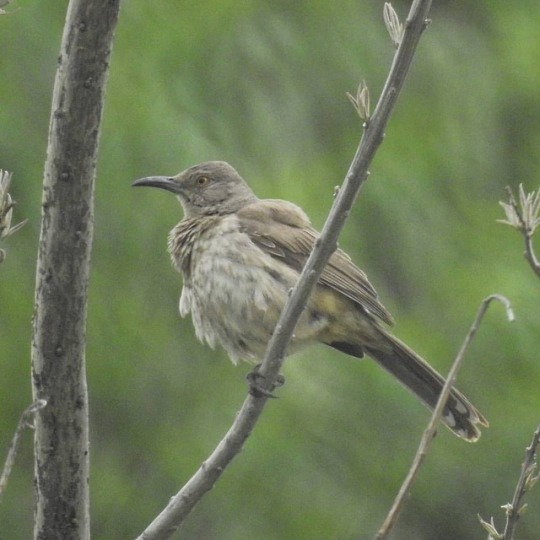
Cuando hace un poco de frío, las aves esponjan sus plumas como este Cuitlacoche pico curvo, Toxostoma curvirostre. ❄ #quimicus #nikon #aves #averaves #pajarear #birds #birdswatching #birding #cuitlacoche #cuitlacochepicocurvo #Toxostomacurvirostre #thrasher #curvebilledthrasher #hacefrio #naturephotograpy #naturaleza #nature #Salamanca (en Salamanca, Guanajuato) https://www.instagram.com/p/BpKtZENBO9M/?utm_source=ig_tumblr_share&igshid=1gz3r7229iy9i
#quimicus#nikon#aves#averaves#pajarear#birds#birdswatching#birding#cuitlacoche#cuitlacochepicocurvo#toxostomacurvirostre#thrasher#curvebilledthrasher#hacefrio#naturephotograpy#naturaleza#nature#salamanca
1 note
·
View note
Photo
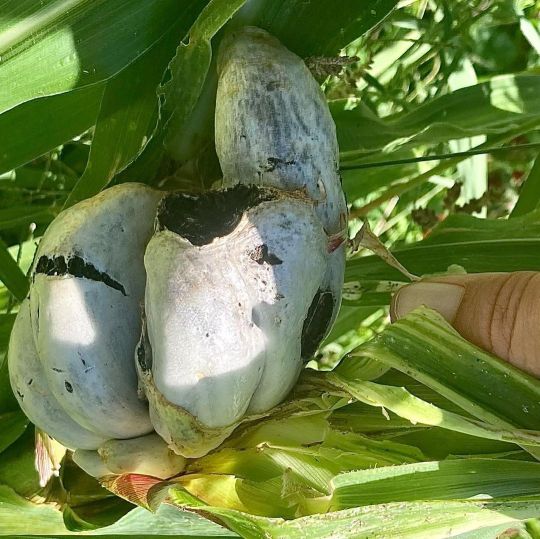
My biggest corn 🌽 smut (cuitlacoche) ever! . . . . . #mushroomgarden #fungi #cuitlacoche #gardening #gardensofinstagram #fungusamongus #dogdaze (at Community Roots) https://www.instagram.com/p/CTpabVyFN_G/?utm_medium=tumblr
0 notes
Photo
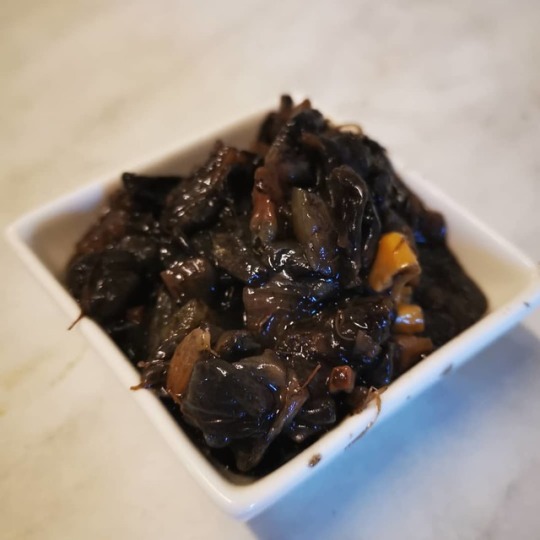
Cuitlacoche/Huitlacoche aka "Corn Truffle" aka "Corn Smut" looks gnarly, really intimidating as an ingredient. But I'm still pretty excited to try it. Will be making a scrambled egg dish with it for dinner. #cuitlacoche #huitlacoche #corntruffle #cornsmut #mexicanfood #bizarrefoods #墨西哥菜 #奇怪 https://www.instagram.com/p/B3g0tWLjqEq/?igshid=yoaec3ppjhe4
0 notes
Photo
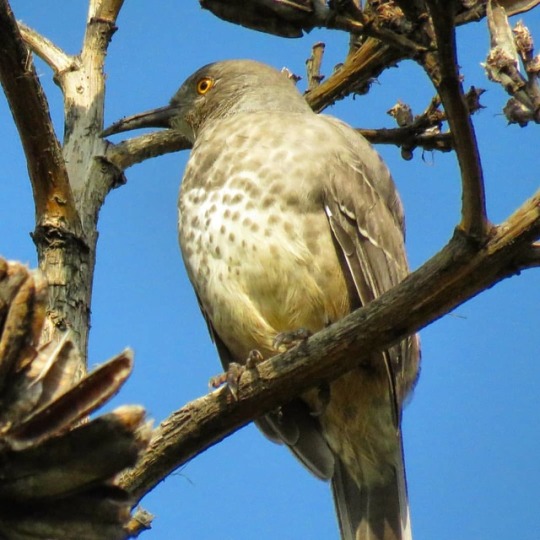
Cuitlacoche Pico Curvo (Toxostoma curvirostre) #cdmx #animalphotos #naturephotography #naturelovers #curioso #bonito #wildlifephoto #nature #naturephotographer #animals #birds #birding #lintu #vogel #aves #birdwatching #birdworld #beautiful #kawaii #cuitlacoche #cuitlacochepicocurvo (en Deportivo Huayamilpas) https://www.instagram.com/p/B2slwGPgmXn/?igshid=1guck6ek7idmt
#cdmx#animalphotos#naturephotography#naturelovers#curioso#bonito#wildlifephoto#nature#naturephotographer#animals#birds#birding#lintu#vogel#aves#birdwatching#birdworld#beautiful#kawaii#cuitlacoche#cuitlacochepicocurvo
0 notes
Photo
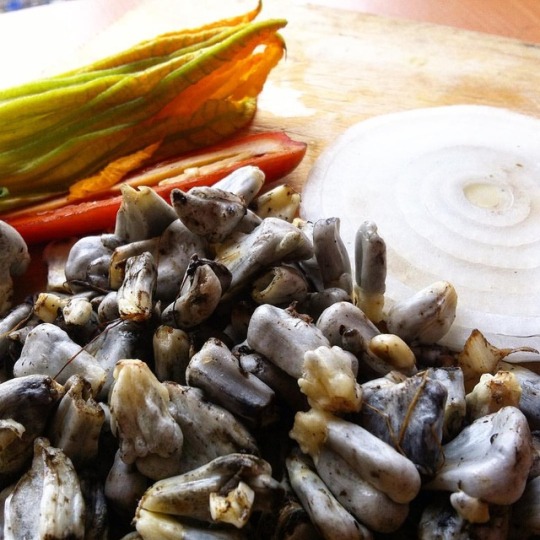
Esa combinación de #cuitlacoche #cebolla #ajo #chileserrano #flordecalabaza todo bien #frito para hacerte una #Lorenza #vegetariana #si te hace #suspirar en un #desayuno 🇲🇽👍 #mexicanfood #ancestralfood #coolfood #aztecfood #comidacolorida #comidaextra #fungus #maiz #instagood #instafood #instachef #cocinando #proteina #lunch (at Distrito Federal, Mexico)
#cuitlacoche#flordecalabaza#desayuno#instagood#suspirar#proteina#ancestralfood#frito#vegetariana#comidacolorida#fungus#cocinando#coolfood#lorenza#aztecfood#lunch#maiz#comidaextra#ajo#chileserrano#mexicanfood#instafood#instachef#si#cebolla
1 note
·
View note
Photo
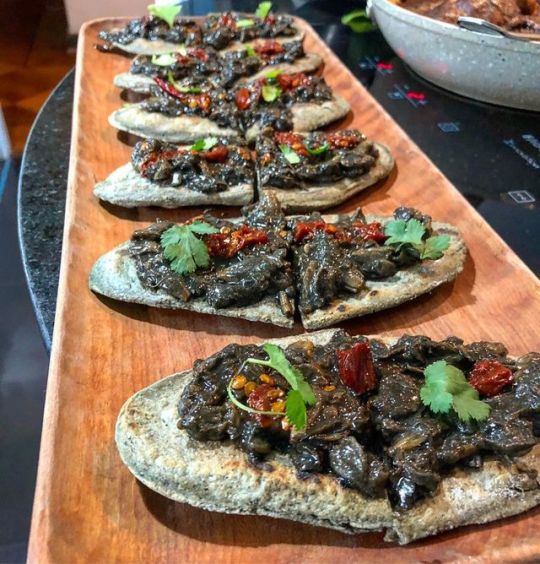
Happy friends and fam.. homemade tlacoyos filled with requesón, topped with huitlacoche, chipotle and cilantro!! #foodporn #homecooking #smuggling #huitlacoche #cuitlacoche #mexican #thewall #yummy #fresh #eatgood #goodbites #vegetarian #healthy https://www.instagram.com/p/Bydi-kYnVNu/?igshid=1hpiswwzzxa4x
#foodporn#homecooking#smuggling#huitlacoche#cuitlacoche#mexican#thewall#yummy#fresh#eatgood#goodbites#vegetarian#healthy
0 notes
Photo
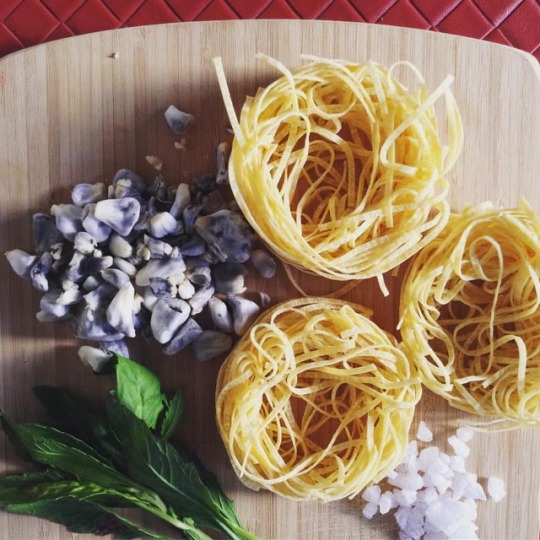
A cocinar! #Cuitlacoche #Epazote #salgorda #lamolisana #taglierinialluovo by Alfie Montesinos (en OJO Fotográfico)
1 note
·
View note
Photo
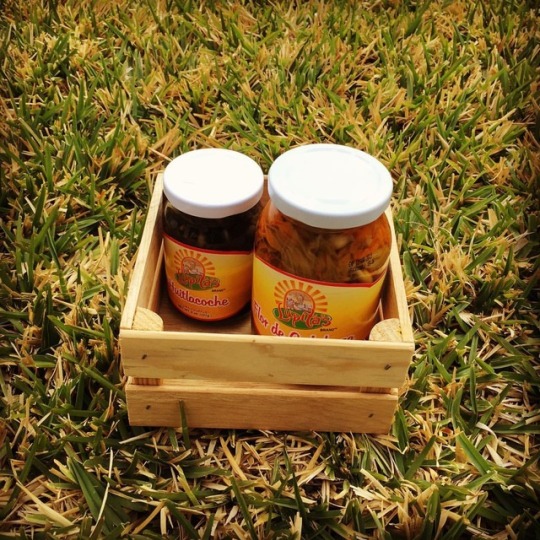
#pumpkin #flower #cuitlacoche #mexico #flavors #gourmet
0 notes
Text
Sesion 8
Holaaaaaa que tal todo bien? bueno comenzemos, en esta sesion la cual es la 8 vimos acerca de los vegetales precolombinos el profesor nos explica sobre como los vegetales han sido un alimento escencial en la epoca prehispanica, puesto que tenian un conocimento superlativo hacerca de estos incluso mas que algunas otras ramas como la ciencia, astronomía y matemáticas. conocían sus propiedades medicinales y clasificaban las plantas según su uso, color, sabor, tiempo, lugar de crecimiento, forma, tamaño, efectos sobre el cuerpo, etc
El Jitomate, Tomate, Aguacate, Acuyo, Chilacayote entre otros muchos mas son algunos de los vegetales que consumian en esa epoca.
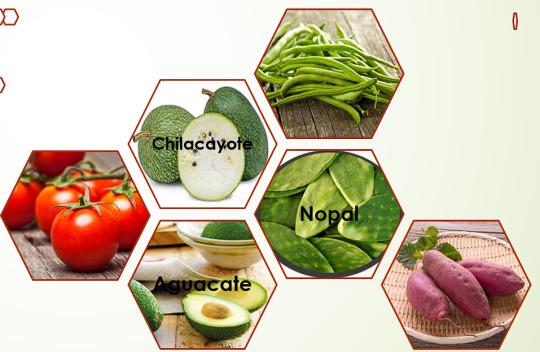
Tambien nos decian Los mexicas usaban en los jardines, huertos rodeados de canales, cultivo de legumbres, flores y árboles de provecho, las que hoy son conocidas como las famosas chinanpas
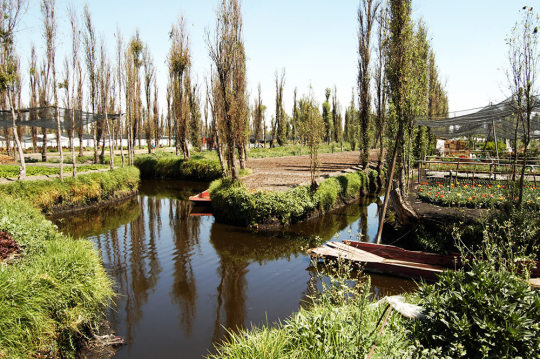
A continuacion nos hablo de los vegatales mas famoso utilizados en esa epoca.
Hablo primero del JITOMATE esta verdura Es de las aportaciones que México hizo al arte culinario, de él existen fundamentalmente dos variedades: el rojo, llamado jitomate, y el verde, llamado tomate, se utilizaba el jitomate en su cocina desde antes de la llegada de los colonizadores.
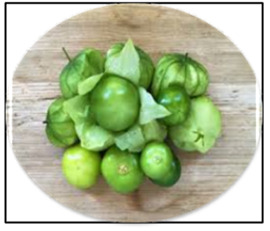
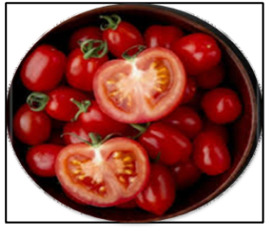
El agauacate es un árbol originario de México. Su nombre proviene del náhuatl ahuacatl, que significa “testículos de árbol”, por la forma del fruto. es considerado por los antiguos mexicas, como un árbol sagrado; el árbol de la generación de la vida, por la forma de su excepcional fruto. en mexico existen al menos 20 diferentes especies de aguacate, y pero solo tres son originaro de Mexico el mexicana, antillana y guatemalteca.
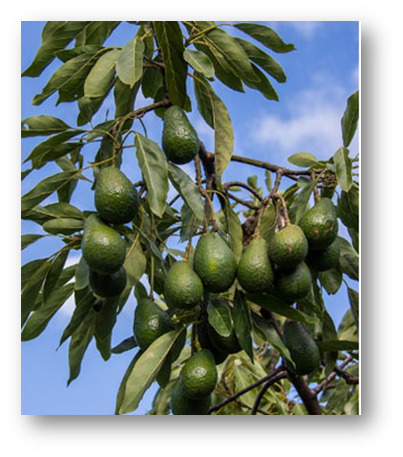
El CHILACAYOTE de origen y domesticación en México
En la epoca prehispanica en la alimentación pero tambein en se partían por la mitad y se les extraía la pulpa hasta vaciarlos para formar recipientes. El huazontle es una planta comestible con flores verdes muy pequeñas y es considerada un quelite que como sabemos eso lo vimos en seiones pasadas este era muy utilizado en la cocina mexicana, pero debido a la poca difusión y conocimiento sobre esta planta su uso ha disminuido, al dia de hoy tambien es un platillo popular que de ves en cuando se consume en la cocina mexicana.
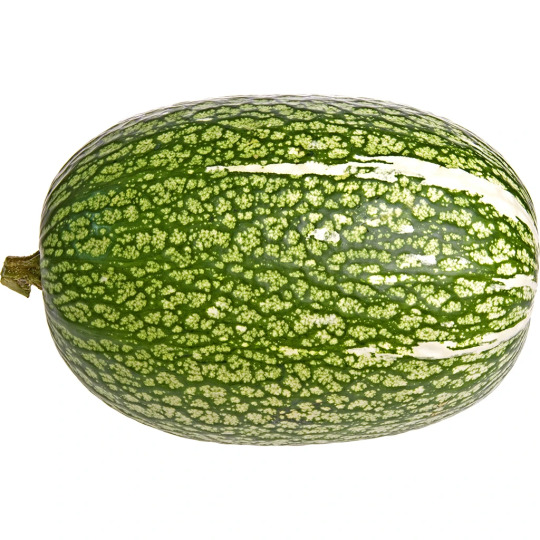
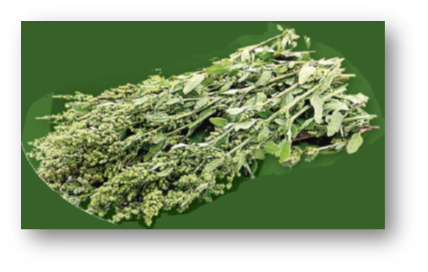
Los NOPALES son un árboles cuya hoja es comestible y la tuna es su fruta. En ambos casos se trata de un ingrediente rico, milenario y muy benéfico para la salud. desde tiempos remotos se reconocía su variedad según el color de la fruta que crecía.
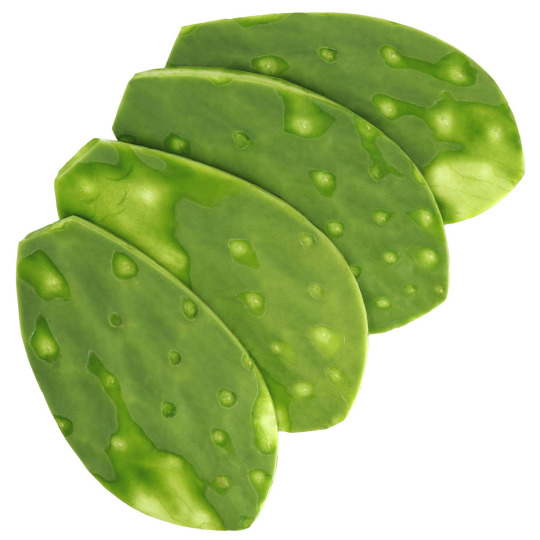
Buenos ese dia tambien cocinamos 4 recetas que la verdad no fueron mis favorita pero quedaron bien, la 4 recetas fueron nopales prehispanicos, ensalada de amaranto, romeritos con tequequite y pesaco en achiote. Pasando a la parte practica esa sesion hicimos 4 deliciosas y faciles un poco laboriosas. Los primero hicimos una rica sopa de milpa de origen prehispánico, era típica de las temporadas de lluvias que es cuando abundan las flores de calabaza el cuitlacoche y se cosecha el maíz.
Esa sesion hicimos 4 deliciosas recetas.
Torta de quelites y salsa molcajeteada, el termino quelite se aplica en general a todas las flores,hojasbulbos y brotes de arboles tiernos, y en cuanto a la salsa se dicen que las mejores salsas son las de molcajete. Una de las piezas más emblemáticas de la cultura mexicana, que le otorga a la elaboración un aprecio incomparable
Y por ultimo unos deliciosos sopes, de origen prehispánico, reciben diversos nombres según las zonas del país por ejemplo en el centro del país se les conocen como huaraches, al sur como pellizcadas, picadas o picaditas.

1 note
·
View note
Photo
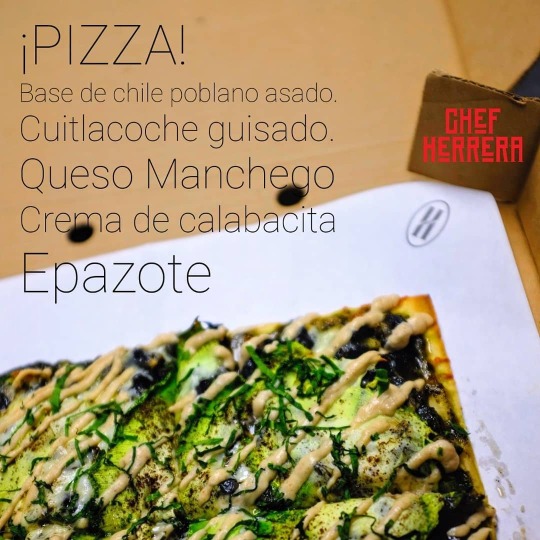
PIZZA. Le recuerdo que en la Fonda tenemos dos espectaculares y muy mexicanas pizzas; la de cuitlacoche con chile poblano y la de hongos con mulato. Las tenemos para comer ahí o para llevar; marque al (81) 19577070 y diga que le preparen las dos o métase a fondasanfrancisco.pidedirecto.mx y se las mandan a su casa. Cómo ve. Estamos en Manuel González 115, entre Vasconcelos y Garza Ayala, en el centro de San Pedro. Abrimos desde la mañana hasta la noche. ¡Acá nos vemos! #guisosvergas #pizzamexicana #cuitlacoche https://www.instagram.com/p/CONjypan7eh/?igshid=8wnfk2xfpfyd
2 notes
·
View notes
Photo

Truit-tuut-priit-curt-clu-clu... Este precioso ejemplar de cuitlacoche pico curvo, Toxostoma curvirostre, canta alegrando la mañana. 🤔 ¿Estará cantando para él, o tal vez para atraer a una compañera o a su familia; a lo mejor avisando que lo anda molestando un humano y que las demás aves se cuiden y se alejen? #quimicus #Nikon #aves #averaves #pajarear #birds #birdswatching #birding #cuitlacoche #picocurvo #toxostoma #curvebilledthrasher #trasher #cantobello #cantomañanero #naturephotography #naturaleza #nature #Irapuato (en Irapuato)
#naturephotography#birds#averaves#curvebilledthrasher#cantomañanero#quimicus#pajarear#trasher#cuitlacoche#irapuato#birding#nikon#cantobello#aves#toxostoma#picocurvo#birdswatching#nature#naturaleza
5 notes
·
View notes
Text
Cuicacoche de Isla Cozumel

El cuitlacoche de Cozumel (Toxostoma guttatum) es una especie de ave paseriforme de la familia Mimidae endémica de la isla de Cozumel, junto a la península de Yucatán, en México
En peligro crítico (UICN 3.1)
1 note
·
View note